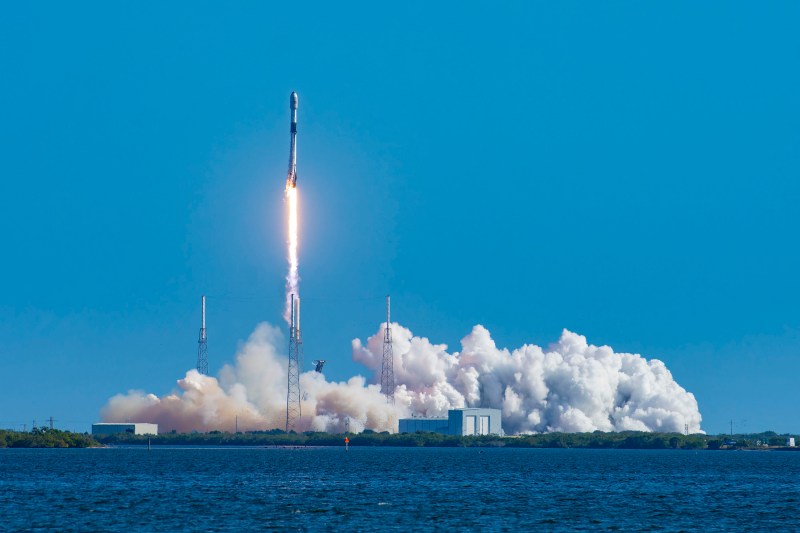Featured Image: SpaceX
Lift Off Time | April 01, 2022 – 16:24:00 UTC | 12:24:00 EDT |
|---|---|
Mission Name | Transporter 4, the fourth SpaceX dedicated small satellite rideshare mission |
Launch Provider | SpaceX |
Customer | Numerous |
Rocket | Falcon 9 Block 5, booster B1061-7 |
Launch Location | Space Launch Complex 40 (SLC-40), Cape Canaveral Space Force Station, Florida, USA |
Payload mass | Unknown |
Where are the satellite going? | Sun-synchronous Orbit |
Will they be attempting to recover the first stage? | Yes |
Where will the first stage land? | Just Read the Instructions (JRTI) approx. 532 km downrange |
Will they be attempting to recover the fairings? | Yes |
Are these fairings new? | Yes |
How’s the weather looking? | The weather is currently 30% go for launch (as of March 31, 2022 at 12:15 UTC) |
This will be the: | – 32nd orbital launch attempt of 2022 – 155th mission for SpaceX all-time – 146th Falcon 9 flight – 56 day booster turn around time – 90th re-flight of a booster – 11th re-flight of a booster in 2022 – 112th booster landing – 38th consecutive booster landing (a record) – 12th launch for SpaceX in 2022 – 83rd SpaceX launch from SLC-40 |
Where to watch | Official livestream |
What’s All This Mean?
SpaceX will launch their fourth dedicated small satellite rideshare mission from Space Launch Complex 40 (SLC-40), Cape Canaveral Space Force Station, in Florida. Onboard Transporter-4 are 40 payloads from various customers. Some customers have flown on previous Transporter missions, such as Satellogic on Transporter 3. The Falcon 9 Block 5 booster, B1061-7 will land in the Atlantic Ocean on the Autonomous Spaceport Drone Ship, Just Read The Instructions (JRTI).
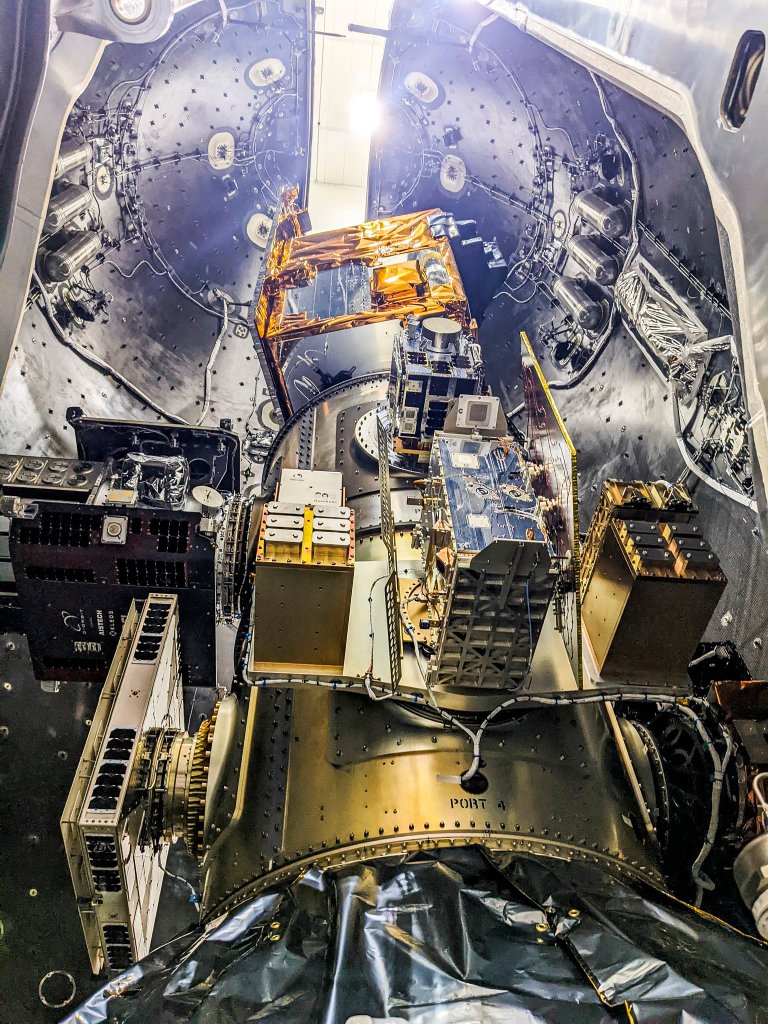
What’s On Transporter 4?
A total of 40 payloads will be packed into the 5.2 m Falcon 9 fairing and deployed across nearly 90 min of mission time after reaching a Sun-Synchronous Orbit (SSO). The deployment sequence is determined by numerous variables including customer needs and satellite placement on the payload adaptor rings.
Payloads have specific volumetric constraints and can interface with two diameter rings, 15 in (38 cm) and 24 in (61 cm). The larger of the two allows for more volume, or a larger payload. Customers can also purchase the top slot, which allows for the biggest payload possible on a Transporter mission. A 15 in (38 cm) port can support a payload mass up to 454 kg (1,000 lb) while a 24 in (61 cm) port can support up to a 830 kg (1,830 lb) payload mass.

Payloads include satellites from ExoLaunch, D-Orbit Spacelust, Satellogic, and others.
Omnispace
Omnispace is starting a new constellation that will take approximately four years to complete. They will have two satellites on Transporter 4 that will act as prototypes. Omnispace has not yet stated the fully intended size of constellation. Once complete, the satellites, in combination with terrestrial ground systems, will be able to provide 5G and internet of things services using this hybrid system.

These services will be accessible by devices such as the everyday mobile phone. The phone will connect to ground systems from the carrier it uses, as it does now. However, Omnispace states that when roaming or out of range from ground connections, the device will automatically connect to the 5G satellite network.
Each satellite is built by Thales Athena Space using a Nanoavionics satellite bus. A satellite bus is the power platform which the satellite is built on which also handles systems such as power, propulsion, and general control.
Satellogic
Previously launching on Transporter 3, Satellogic plans to launch five more satellites on Transporter 4. One satellite will be a NewSat Mark V version while the other four will be updated NewSat Mark IV versions. The main difference between the two involves the hardware onboard.
The Mark V satellite has more capable cameras, radios, sensors, and computers than the Mark IV. The upgraded Mark IV satellites have increased storage capacity as well as updated navigational and propulsion systems over previous versions. However, the main system hardware such as the cameras are identical to Mark IV satellites already in orbit.
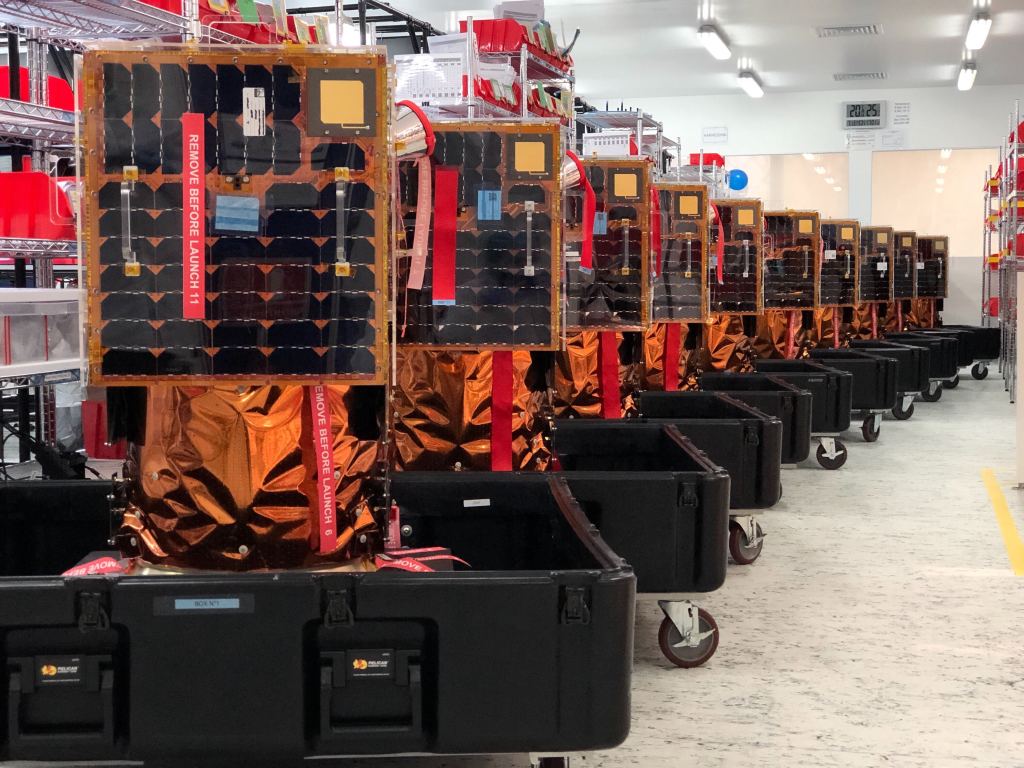
Each satellite measures 51 by 57 by 82 cm and weighs 38.5 kg dry (no propellant onboard). Cameras on board include a 29 band hyper-spectral camera and a multi-spectral camera with a maximum image resolution of 70 cm. For specifics on the Mark IV satellite, go here.
SPACELUST And Deployed Spacecraft
SPACELUST, which is operated by D-Orbit, is the fifth launch of the company’s ION satellite carrier (ION). As stated in the vehicle name, it will use ion propulsion to transfer its seven cube sats into their respective orbits. The original orbit will be a 500 km Sun- Synchronous orbit.
These spacecraft include four satellites for the Kleos Patrol mission, adding to the constellation of eight already in orbit. This brings the total to twelve. Kleos satellites conduct intelligence and observational studies which can be used by government and commercial organizations. Each satellite has the ability to detect and locate a radio frequency emission to within 300 m.
Additionally, SPACELUST will deploy three satellites developed at the Space Exploration Laboratory (SPEL). These satellites include PlantSat, SUCHAI 2 and SUCHAI 3
Other Payloads
There are numerous other payloads which serve a wide range of purposes also flying on Transporter 4. These include YAM-6/VanZyl-1, Alba Cluster 5 (KILI-1 and others), GNOMES-3, RROCI, Albania 1, BDSat, Pixxel, and EnMAP
What Is Falcon 9 Block 5?
The Falcon 9 Block 5 is SpaceX’s partially reusable two-stage medium-lift launch vehicle. Block 5 is the final iteration of the Falcon 9; the goal is to apply all the lessons learned from 56 previous Falcon 9 pre-Block 5 flights into a human-rated reusable rocket. The Falcon 9 contains three main components: a reusable first stage, an expendable second stage, and a reusable fairing.
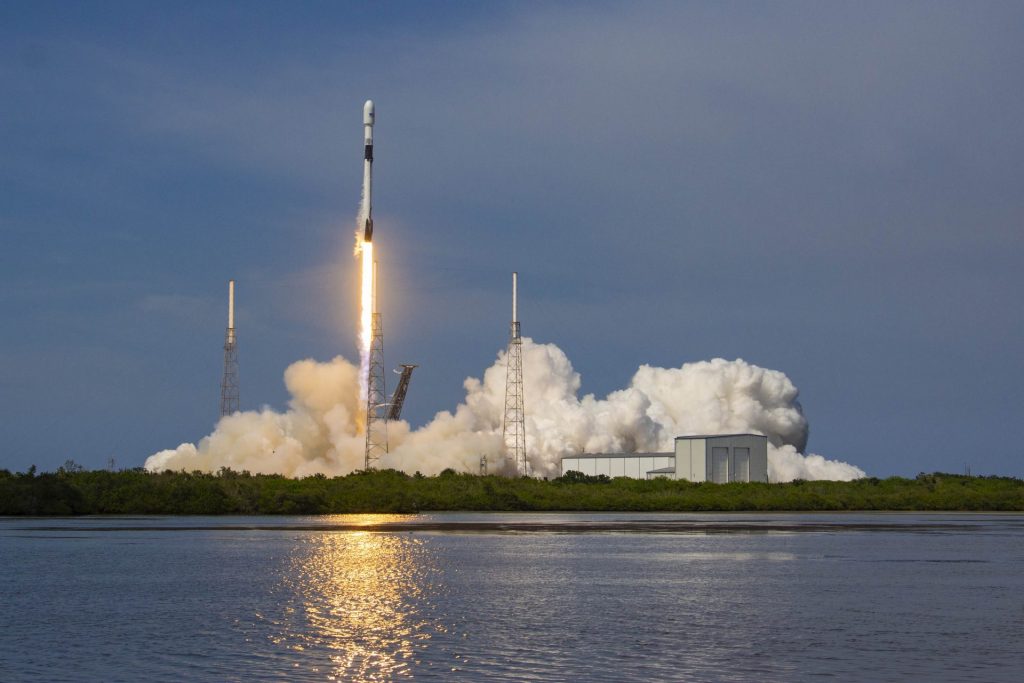
Block 5 updates:
SpaceX introduced a lot of changes on Block 5, allowing it to become the crew-launching reusable rocket that we know today. To start, the Composite Overwrapped Pressure Vessels (COPVs) had to undergo a complete redesign. NASA mandated the COPV redesign, as it had been the cause of both of the Falcon 9 failures: AMOS-6 and CRS-7.
Along with certification for human spaceflight, Block 5 came with a number of other major changes. To increase the amount of flight each booster could handle, and decrease the turnaround time, SpaceX reinforced the landing legs, upgraded the grid fins, and added a carbon fiber interstage. They also added heat-resistant external paint and upgraded the engines. For more information about the changes in Block 5, and the other Blocks of the Falcon 9, click the image to check out this video by the Everyday Astronaut:
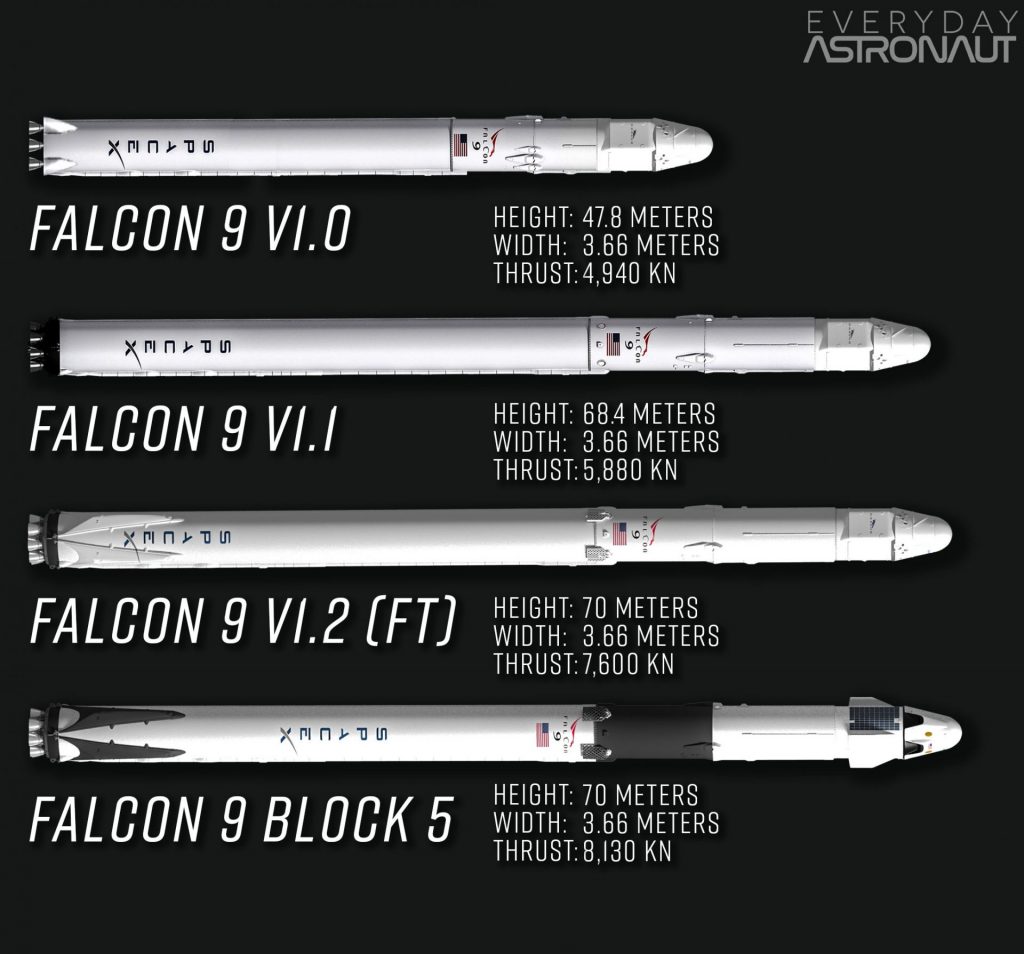
Falcon 9 Booster B1061
The booster supporting this mission is B1061. This booster has flown six times; its maiden flight was the SpaceX Crew-1, which launched on November 16, 2020. The booster’s second flight was on Crew-2, which launched on April 23, 2021. The booster’s third flight was on Sirius SXM-8 mission, which launched on June 6, 2021. CRS-23 was B1061’s fourth flight, which launched on August 29, 2021. B1061’s fifth mission was IXPE, which launched on December 9, 2021. Finally, the sixth mission for the booster was Starlink Group 4-7 on February 3, 2022. As Transporter-4 is the booster’s seventh mission, it changes its designation to B1061-7.
Following stage separation, the Falcon 9 will conduct 2 burns. These burns will softly touch down the booster on Just Read The Instructions approximately 532 km downrange.
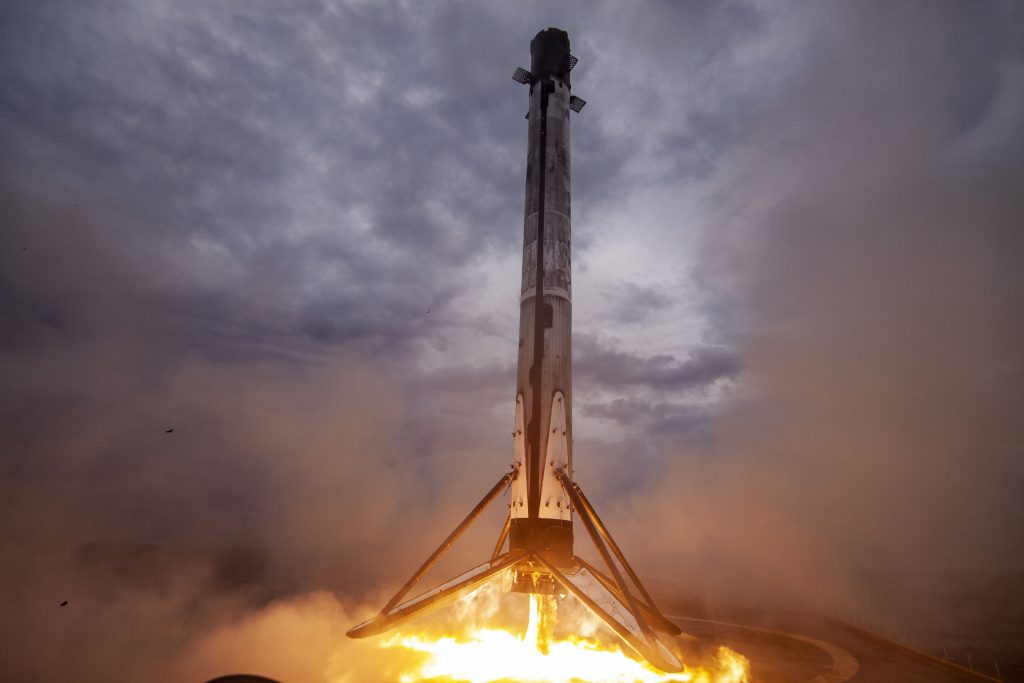
Fairing Reuse
SpaceX is the first entity ever that recovers and reuses its fairings. The recovery vessels, Go Ms. Tree and Go Ms. Chief, attempted to recover the fairing halves from the water. After being jettisoned, the two fairing halves use cold gas thrusters to orientate themselves as they descend through the atmosphere. Once at a lower altitude, they deploy parafoils to help them glide down to a soft landing for recovery.
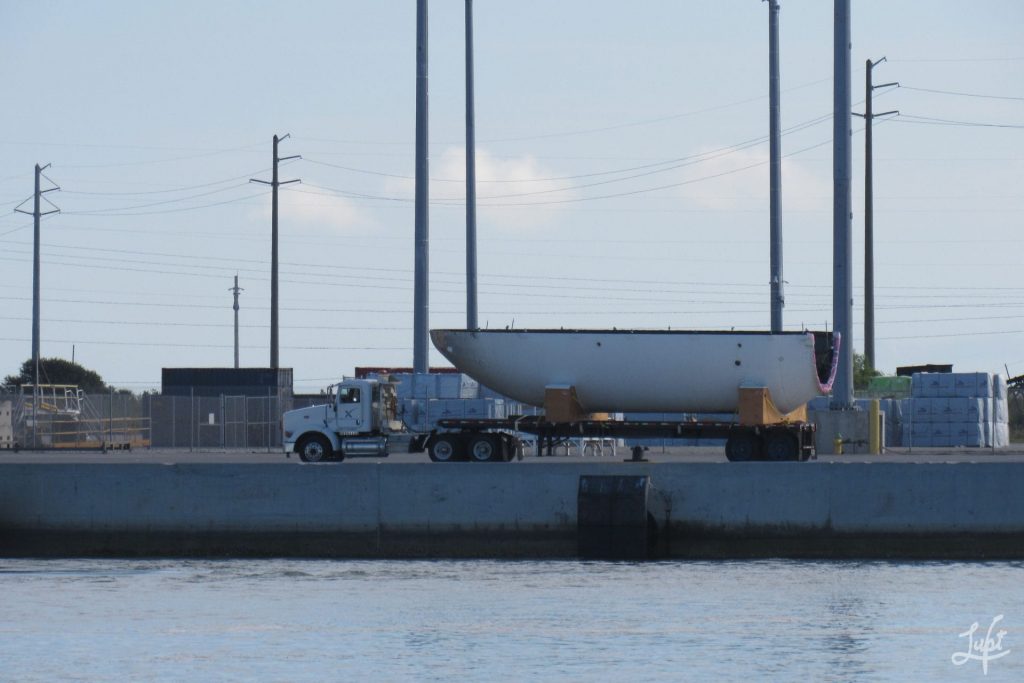
Transporter-4 Full Mission Profile
Hr/Min/Sec Event
– 00:38:00 SpaceX Launch Director verifies go for propellant load
– 00:35:00 RP-1 (rocket grade kerosene) loading underway
– 00:35:00 1st stage LOX (liquid oxygen) loading underway
– 00:16:00 2nd stage LOX loading underway
– 00:07:00 Falcon 9 begins engine chill prior to launch
– 00:01:00 Command flight computer to begin final prelaunch checks
– 00:01:00 Propellant tank pressurization to flight pressure begins
– 00:00:45 SpaceX Launch Director verifies go for launch
– 00:00:03 Engine controller commands engine ignition sequence to start
– 00:00:00 Falcon 9 Liftoff
Launch, Landing, And Satellite Deployment*
Hr/Min/Sec Event
00:01:12 Max Q (moment of peak mechanical stress on the rocket)
00:02:30 1st stage main engine cutoff (MECO)
00:02:34 1st and 2nd stages separate
00:02:41 2nd stage engine starts (SES-1)
00:03:01 Fairing deployment
00:08:40 1st stage entry burn start
00:09:59 2nd stage engine cutoff (SECO-1)
00:10:26 1st stage landing
00:28:43 2nd stage engine starts (SES-2)
00:28:45 2nd stage engine cutoff (SECO-2)
01:08:28 2nd stage engine restarts (SES-3)
01:08:29 2nd stage engine cutoff (SECO-3)
01:14:42 ARCSAT deploys
01:14:54 AlfaCrux deploys
01:15:07 12 Swarm spacecraft deploy
01:16:22 Shankuntala deploys
01:16:39 BD-Sat deploys
01:17:08 BRO-7 deploys
01:17:28 NewSat-27 deploys
01:17:44 NewSat-23 deploys
01:18:43 NewSat-24 deploys
01:20:18 NewSat-25 deploys
01:22:48 NewSat-26 deploys
01:23:25 Hawk 4C deploys
01:23:36 Hawk 4B deploys
01:24:13 Hawk 4A deploys
01:25:46 MP42 deploys
01:25:58 Lynk Tower 01 deploys
01:26:17 SCV-005 Almighty Alexius deploys
* All times are approximate





